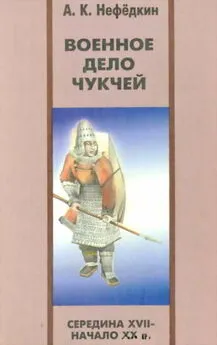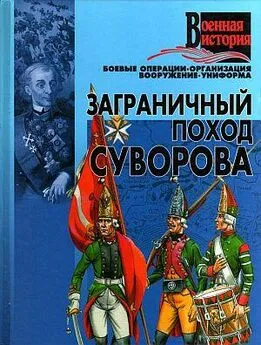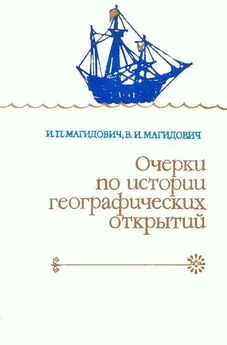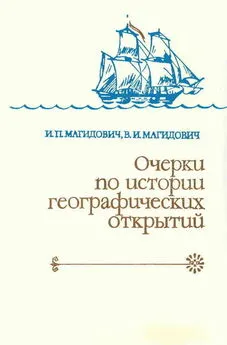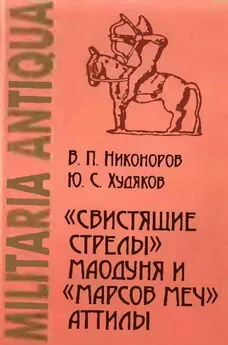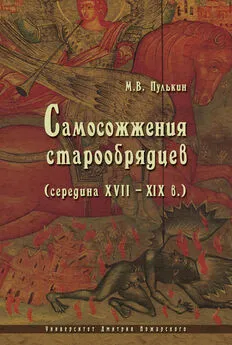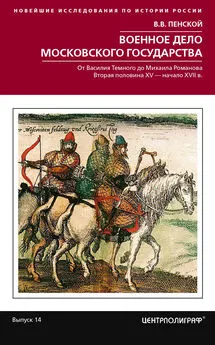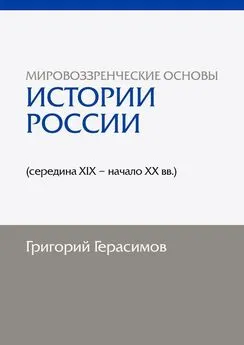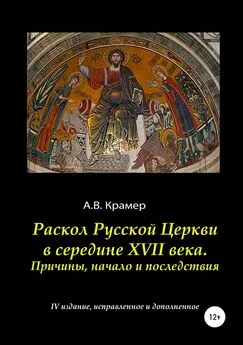Александр Нефедкин - Военное дело чукчей (середина XVII—начало XX в.)
- Название:Военное дело чукчей (середина XVII—начало XX в.)
- Автор:
- Жанр:
- Издательство:Издательство «Петербургское Востоковедение»
- Год:2003
- Город:Санки-Петербург
- ISBN:5-85803-244-3
- Рейтинг:
- Избранное:Добавить в избранное
-
Отзывы:
-
Ваша оценка:
Александр Нефедкин - Военное дело чукчей (середина XVII—начало XX в.) краткое содержание
Настоящее издание рассматривает различные стороны военного дела чукчей на всем протяжении известной нам по письменным и другим источникам эпохи начиная со второй половины XVII в., когда чукчи впервые столкнулись с сибирскими казаками, и вплоть до начала XX в., когда еще происходили столкновения на почве кровной мести. Привлекаются сведения о соседних народах, азиатских и американских эскимосах, коряках и русских, что позволяет лучше раскрыть особенности военного дела чукчей. Книга является первым в историографии трудом, посвященным военному делу чукчей. Она будет полезна не только специалистам-этнографам, но и самому широкому кругу читателей, интересующихся военным делом.
На первой странице обложки: Чукотский воин XVIII в. Реконструкция. Рисунок А В. Козленке.
Военное дело чукчей (середина XVII—начало XX в.) - читать онлайн бесплатно ознакомительный отрывок
Интервал:
Закладка:
497. Langsdorff G. H., von. 1812. Bemerkungen auf einer Reise urn die Welt in den Jahren 1803 bis 1807. Bd. II. Frankfurt am Main.
498. Laufer В. 1914. Chinese Clay Figures. Pt. I. Prolegomena on the History of Defensive Armor // Field Museum of Natural History Publication 177. Anthropological Series. Vol. 13. Chicago. № 2. P. 73―315.
499. Le Brun C. 1718. Voyages de Corneille le Brim par la Moscovie, en Perse et aux Indiens Onentales. Vol. I. Amsterdam.
500. Lowe F. 1843. Die Tschuktschen / Nach dem Russischen von F. Lutke mitgetheilt von F. Lowe // Archiv fiir wissenschaftliche Kunde von Russland Berlin. Hf. 3. S. 446―464.
501. Malaune J. 1974. Raids et esclavage dans les societes autochtones de detroit de Behring // Inter-Nord: Revue international d'etudes arctiques et nordiques № 13―14 Decembre Mouton; Paris; La Haye. P. 129―155.
502. Murdoch J. 1884. AStudy of the Eskimo Bows in the U. S. National Museum // Annual Report of the Board of Regents of the Smithsonians Institution. 1884. Washington, 1885. Pt. 2. P. 307―316.
503. Nelson E. W. 1899. The Eskimo about Bering Strait // Eighteenth Annual Report of the Bureau of American Ethnology to the Secretary of the Smithsonian Institution 1896―1897. Pt. I. Washington. P. 19―518.
504. Ollivier A. 1877. Sur les Esquimaux d'Asie// Bulletins de la Societe d'anthropologie de Paris. T. XII. 2= Serie. Paris. P. 587―598.
505. [ Pallas P .].1781. Geographische Beschreibimg des Anadyrflussen und in selbigen einfallenden Bache // Neue nordische Beytrage zur physikalischen und geographischen Erd— und Volkerbeschreibung, Naturgeschichte und Oekonomie. Bd. I. St. 2. St. Petersburg; Leipzig. S. 245—48.
506. Palsi S. 1983. Arktisia kuvia. 2. painos. Helsinki.
507. Parry W. E. 1824. Journal of a Second Voyage for the Discovery of a North-West Passage from Atlantic to the Pacific; Performed in the Years 1821—2―3 in His Majesty's Ships Fury and Hecla. London.
508. Paulsen P. 1967 Alamannische Adelsgraber von Niederstotzingen (Kreis Heidenheim). Stuttgart.
509. Rasmussen K. 1952. The Alaskan Eskimos as Descibed in the Posthumous Notes of Dr Knud Rasmussen by H Ostermann / Translated from the Danish by W. E. Calvert. (Report of the Fifth Thule Exepition, 1921―1924. Vol. X, № 3). Copenhagen.
510. Ratzel F. 1887. Ueber die Stabchenpanzer und ihre Verbreitung im nordpazifischen Gebiet // Sitzungsberichte der philosophisch-philologischen und lustorischen Classe der k. b. Akademie der Wissenschaften zu Miinchen. Jg. 1886. Miinchen. S. 181―216.
511. Ray D. J. 1975 The Eskimos of Bering Strait, 1650―1898 Seattle, London
512. Reuse W. J, de. 1994. Siberian Yupik Eskimo; The Language and Its Contacts with Chukchi. (Studies in Indigenous Languages of the Americas). Salt Lake City.
513. Robinson H. R. 1967. Oriental Armour. (Arms and Armour Series). New York
514. Sauer M. 1802. Voyage fait par ordre de I'imperatrice de Russie Catherine II, dans le nord de la Russie Asiatique, dans la Mer glaciale, dans la Mer d'Anadyr, et sur les cotes de I'Amerique depuis 1785 jusqu'en 1794 par le commondore Billings / Traduit de Г Anglais par J. Castera. T. 11. Paris.
515. Sheppard W. 2002. Assault on Qawiaraq: Siberian-Alaskan Warfare in Historical and Cultural Context // Manuscript on File at the Bureau of Indian Affairs, ANCSA Office. Anchorage. P. 1―17.
516. StoneG. C. 1961. AGlossary of the Construction, Decoration and Use of Arms and Armor in All Countries and in All Times. New York.
517. Strahlenberg Ph. I. 1730. Das Nord und Ostliche Theil von Europa und Asia, in so weit solches das ganfie RuBischen Reich mit Siberien und der grossen Tataren in sich begreiffet, in einer historisch-geographischen Beschreibung der alten und neuern Zeiten Stockholm
518. Swenson 0. 1951 Northwest of the World; Forty Years' Trading and Hunting in Northern Siberia. London.
519. Thordeman B. 1939. (in collaboration with P. Norlimg and B. E. Ingelmark). Armour from the Battle of Wisby, 1361 Vol. I: Text. Stockholm.
520. Thornton H. R. 1931. Among the Eskimos of Wales, Alaska, 1890―93. Baltimore; London; Oxford.
521. VanStone J. M. 1983. Protective Hide Body Armor of the Historic Chukchi and Siberian Eskimos // Etudes / limit / Studies. Vol. 7. Quebec. № 2. P. 3—24.
522. Wagner J. L. 1789. Schicksale wahrend seiner unter den Russen erlittenen Staatsgefangenschaft in den Jahren 1759 bis 1763… Berlin.
523. Wardwell A. 1986. Ancient Eskimo Ivories of the Bering Strait. New York.
SUMMARY
Sources of the researched topic could be divided into two main groups: material and written. First group involve few archaeological data, rare artifacts in world museum collections and some iconographic materials. Another group refer to oral folk records (the largest body of data), official documents and notes of travelers, among whom we could mark out Dr. K. Merk's and his description of Chukchi.
Chronological frames of this research could be determined by the second half of the 17 thcentury with the appearance of first authentic written evidences, which were mainly Cossack reports. On the other hand must be mentioned ethnographical and oral folklore materials related to events of the 18 thcentury. Although armed conflicts between Chukchi and their neighbours, mostly Russians and Koiyaks, stopped in the end of the 18 thcentury, Chukchi raid Alaska Eskimos up to 40's of the 19 thcentury and from time to time struggled with each other in individual collisions or family encounters during first quarter of the 20 thcentury. Most part of evidence about Chukchi belongs to the 19 th—20 thcenturies.
As long as the Coastal Chukchi and Asiatic Eskimos resemble both in material culture and warfare, information about them should be considered together. The majority of Chukchi were nomads and reindeer-breeders and most part of materials concerns them.
Military organisation.In case of any menace all adult men were warriors. Council, where rich herd-owners and patriarchs played a leading role, decided major political matters within kin group. In intertribal contacts elders made decisive final opinion and their representatives were able to make peace on behalf of the group. At the same time existed council of several «friendly» kin groups, which functioned from time to time as required. Council of patriarchs that also played important part in everyday life was in charge of preparing warfare plans.
For the military campaign Chukchi were choosing the war leader whose position usually coincide with status of the family master. In the 18 thcentury large coalitions consist of separate tribal groups, headed by toions (chiefs) who were in charge both in war and politics, begin to form. Besides, this position could be hereditary. However because of armistice this position disappeared from majority of Chukchi groups. According to Chukchi traditions relatives owe to help each other in all matters, that is a typical psychology of kindred group, fighting for its survival. Genetic relatives formed a main body of the military force. Although women by tradition accompanied men in campaigns, usually they were not participating in military operations. During campaign women fulfill their ordinary domestic duties, while the Eskimo women were rowing baydars as needed. However if enemy unexpectedly attacked kin group, women could defend and even participated in single combats. From dozen to hundreds men took part in ordinary raids; while in conflicts with Russians, who encroach upon freedom and even upon existence of Chukchi, the latter were able to gather an army up to two or three thousand people.
In course of permanent wars in the 18 thcentury social structure of Chukchi society began to change. Chiefdom structure, which started to turn out, did not get any subsequent development because of cessation of large military activity in the end of the century. Due to permanent external menace of war Chukchi might insensibly form tribal alliance and there were already some territorial unions, headed by toions, but because of the war absence they did not unite into tribes. As far as plundering raids to the neighbouring nomad Koryaks continued, an economic inequalities among Chukchi developed and caused appearance of rich nomads who possessed vast reindeer herds. On the other hand that fact entailed search of new pastures and scattering of the Chukchi population. In the same time an excess of reindeers allowed to trade with the neighbours but not necessarily to loot them.
Training.Chukchi as well as other «primitive» societies esteem cult of force. The strongest one was most respected. Small boy was trained to endure starvation, have less sleep and to develop his muscular system. Boy starting from the age of 5―6 years was forced to train: to get up early, to run in snow-shoes weighted with stones and sometime with spear. Then becoming youth to run alongside the prancing reindeer team and to jumping. Besides this nomads were taught to throw a lasso, and the Maritime Chukchi trained to sling stones. Among military training were a spear fencing, archery and wearing armour. As far as training of children was carried out personally each boy become superior warrior-individual, as a group warriors were fighting less successfully as they were not trained in that tactics. In compliance with the individual characteristics and training warriors were able have specialization in a battle. Wrestlers were fighting enemy hand-to-hand, runners were pursuing recessives.
Armament.Chukchi were using two types of armour: hide laminar armour and lamellar made of ivory, bone, and baleen and afterwards produces from iron. Hide and iron armours defended warrior from head to his knees or to midst of shin. Ivory or bone lamellar armours were either breast-plate or cuirass, protecting warrior's body, sometimes in combination with wings. Hunters on large sea animals invented body armour made of walrus' tusks, i. e. by the Eskimos or their ancestors. It represented a lamellar cuirass with one wing or sometimes with two. On the Bering Strait islands Eskimos had behind their body armour stand-up collar, which was not used on Alaska, it was introduced by Asiatic neighbours. Producing technologies of the body armour from ivory, bone or horn was used in production of the iron lamellar armour. This conclusion also could be made from the same fastener system of the armour plates by use similar perforations. Design of the iron body armour was obviously identical to the laminar one made of hide. Metal body armour was widely used in the second half of the 17 th—18 thcentury when Russians invade into the region and exert influence on population introduced iron. Laminar armour made of hide, protecting body to the midst of knees and having the two wings was typical for Asiatic Eskimos. This armour gave an opportunity to shoot both in left or right stance, as it was required. Above all the armour was intended for missile weapons and as a protection from arrows but not meant for the hand-to-hand fight. Together with the armour one could have couple of laminar shin guards. As wings protected back of the head and face when they were lifted up, helmet was not necessary. Common type of helmet was lamellar helmet convergent to the top. As a helmet liner was used topless cup. An arm-guard was used along with full body armour to provide maximum protection to unprotected hands. A shield was not in use.
Читать дальшеИнтервал:
Закладка:
